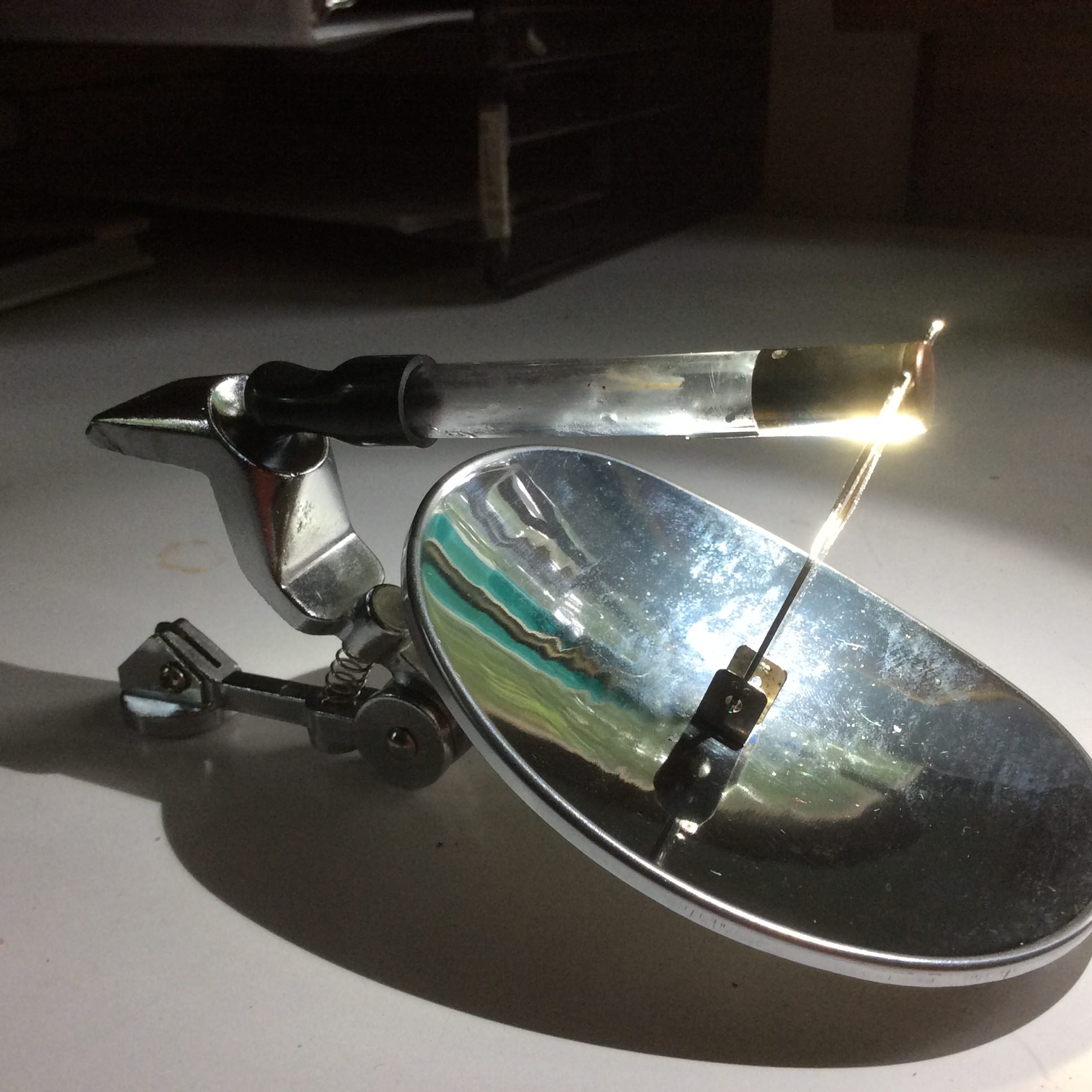Good explanation!
It's all complicated further when the cap is thrown into the works.
Not really.The cap is designed to be as minor "obstacle" to heat transfer as possible.
There are few good reasons behind the fact that the cap is so thin and lightweight.

I'm not really looking for answers but just putting some questions out there that I've mused.
How does the heat go from the cap to the tip? Radiant, Conduction, Convection?
How do these all compare, what ratio are they, do those ratios change dynamically as the cap is heated?
How much contact is there between the cap and tip?
Would the poor conductivity of these metals minimize conduction heating and allow radiant/convective heating to be the main means of thermal energy transfer?
I can't ,of course give an exact answer to any of the above questions ,
but I've a note to add about the last one .
But first things ,first.

As you can notice regarding
Conduction -as a method of heat transfer ,
amongst the size variables are :
1 ) The
cross sectional area of the medium the heat is conducted through
(A).
2 ) The
distance the heat is traveling through the material (dx)
For both
Convection and
Radiation the main variable is
SURFACE AREA .
Path of energy
A ) Flame to outer surface of cap : Not much to say here .
B ) Heat travels from outer surface of cap on to the inner surface of cap :
Through material conduction .
The cap has to be really thin (small dx ) in order for the cap to have as low
thermal resistance ** as possible. Note here that the cap has also small mass .It has to be able to raise and drop it's temperature really fast .
Must store as less heat (energy) as possible.
C ) From inner surface of cap to outer surface of tip ( spiral threaded ) :
No matter which is the main type of heat transfer ,at this case the main variable is surface area at all three cases.Since the surfaces of cap and tip are so close and equal ,
heat is transferred in a very efficient manner ,at any case .
D ) From outer surface of tip into the inner surface of tip: Due to low conductivity of 316L & Ti grade 2 the VapCaps are not so "conduction" vaporizers as they seem to be.Actually they are a very nice balanced "blend" of conduction and convection vaporizer devices.
The cap is almost "neutral" at the whole vaporising procedure.It has to be that way.
The cap should contribute the least into altering the temperature of the tip .
It carries also the "sensor-indicator " devices ,the bimetallic discs ,aka the "clickers" .
If the cap was not neutral it would then affect the linearity of clicker's response with it's stored heat,skewing the indication of temperature range.
The tip does all the job .The "muscle" of a VapCap.
It's mass ,it's material ,it's "threadings" both in the outer in front and inside the inner
towards the condenser ,it's fins ,it's notches ,the chamber size and shape ,
all play their part -small or big- into producing such huge amounts of relatively cool vapor ,
at such constricted space of such small size.
Still the " brains" is the cap.
It's actually the " Human Interface Device " of a VapCap .
Without it operating as supposed ,there's no productive interaction between
the user and the device.User then is "blind" ....Or "deaf" .
(Much) More info :
https://patents.justia.com/patent/20170013877
https://www.google.com/patents/US20170013877
https://patents.justia.com/patent/20140186015
https://www.google.com/patents/US20140186015
Cheers.

**

Rθ cap = dT / Q => Rθ cap =
dx / ( k A )
From the equation is obvious that the thicker the cap ,
the larger it's thermal resistance .
dx = 0,1 mm = 0,0001 m
k (assuming cap is made out of 304 stainless steel aka 18/8 aka A2 ) = 16.2 W/m °C
A = ( π * 0,01 m) * 0,015 m =0,00047 m^2
Rθ cap = 0,0001 m / ( 16.2 W/m °C *0,00047 m^2 ) =>
Rθ cap = 0,0131 °C / W
For every Watt of heat applied THe temperature difference between the outer and inner surface of the cap ,drops by 0,0131 °C .
At 1000 Watts ( 1000 Joules/sec ) of power the difference is 13,1°C .
If the outer surface of the cap is say 900°C ,then the inner
would be 887 °C .
But I'm not sure that a jet torch lighter can deliver that kind of power.
The stored energy of liquid (@25°C) butane is
~ 30 MJ / lt or
~ 30 KJ / ml.
https://www.engineeringtoolbox.com/butane-d_1415.html
If the butane combusted is -say - 0,01 ml/sec
( which seems rather rational for a jet lighter gas flow ) then
the heat power is 300 Joules/sec = 300 Watts .
'Nough with the maths ....




jk






















